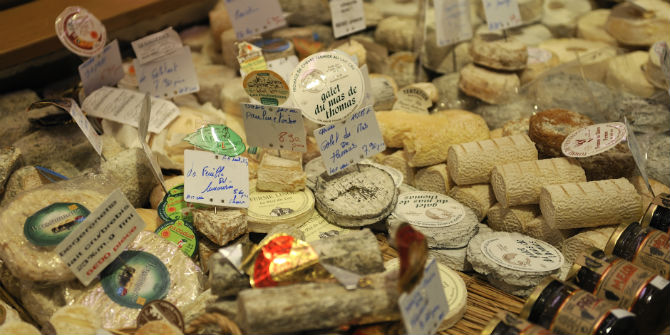 Farm subsidies will stay at their current levels (presumably without an inflation adjustment) for five years after Brexit, and beyond the next general election, Michael Gove told the Oxford Farming Conference in January 2019. Wyn Grant (University of Warwick) explains the future of farm policy after Brexit.
Farm subsidies will stay at their current levels (presumably without an inflation adjustment) for five years after Brexit, and beyond the next general election, Michael Gove told the Oxford Farming Conference in January 2019. Wyn Grant (University of Warwick) explains the future of farm policy after Brexit.
‘Paying landowners for the amount of agricultural land they have is unjust, unfair and drives perverse outcomes. It gives the most from the public purse to those who have the most private wealth (…) We have said that we intend to cap the amount [of money] that goes to people and that we intend to redistribute some of that money so that it is spent on public goods – including on improving productivity and also environmental enhancement.’
One of the concerns about the intensive agriculture encouraged by the CAP is that it has been environmentally damaging, for example in terms of water pollution. The extension of subsidies represents a considerable victory for the NFU and gives farmers more time to plan for the future. The downside is that it may lead them to delaying necessary adjustments to their businesses to prepare for a life without existing blanket support payments. It will create something of a ‘cliff edge’ in 2024. There may have been a case tapering payments, starting before 2024, to facilitate adjustment.

For most farmers, CAP subsidies make the difference between making a profit and running at a loss, so the adjustment process could be painful for some businesses. Upland farmers are particularly vulnerable, even more so if tariffs were imposed on sheepmeat exports after Brexit.
In his speech Mr Gove recognised upland sheep farmers, whose profit margins are more likely to be small but whose contribution to rural life and the maintenance of iconic landscapes is immense. They may continue to receive some form of area payment and they would also benefit from payments for ‘ecosystem services’, such as maintaining areas that sustain wildlife or helping to prevent flooding downstream. The largest landowners may have their payments capped before 2024. The government has yet to make a decision on the cap, but it could be implemented using a sliding scale with the 3,500 farmers who receive more than £100,000 each annually getting a lower amount per hectare above a certain number of hectares.
There is little sympathy for large payments to big landowners, many of whom have come from outside farming. However, these large holdings are often the most efficient and internationally competitive. In future, they will have to compete against French and German farmers who will continue to receive CAP subsidies, albeit somewhat reduced as the EU copes with a smaller budget. Mr Gove hopes that the UK will leave the CAP when Brexit happens in March 2019. Whether the UK remains a member of the CAP during the transition period is still a matter for negotiation, but most officials in London and Brussels believe that Britain will still be a member for a period of time after Brexit.
How can the objective of promoting productivity after Brexit be secured? Farming is on verge of a digital technological revolution which may be as important as earlier revolutions that saw machine power replaced horses and the widespread deployment of fertilisers and agrochemicals. Farmers have been using data from near-earth satellites fed to their kit for some time, for example, to ensure that fertilisers are not over-applied. Drones offer even more precise information.
There are some cost implications (a good quality camera can cost more than the drone) and farmers have to be trained in their use, but the potential for improved decision-making on arable farms is considerable. Other breakthroughs include an ability to remotely monitor the condition of cattle in fields. Experiments are also taking place in the use of robotics in ploughing and planting, these experiments are at an early stage and much work remains to be done, but advocates consider there is no technological barrier to automated field agriculture.
Domestic policy after Brexit needs to address the effective adoption of new technology. The challenge is to decide how can one spread and speed up adoption in a cost-effective way while avoiding the ‘additionality’ problem, i.e., paying farmers for innovations they would undertake anyway.
Knowledge transfer and training are key with an important role for the four Centres for Agricultural Innovation which already exist as part of the Government’s agri-tech strategy. Apart from the need to design appropriate policy instruments for a domestic agricultural policy, it is also important that there is clarity about the objectives that policy is intended to achieve which was often a problem with the CAP.
This post represents the views of the author and not those of the Brexit blog, nor the LSE. It first appeared at The UK in a Changing Europe.
Wyn Grant is Professor of Politics at the University of Warwick.






